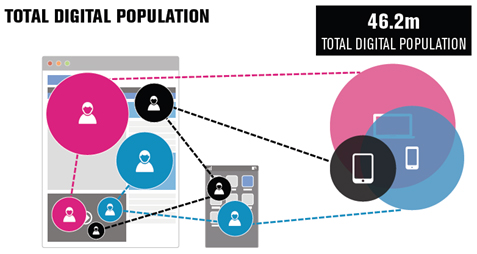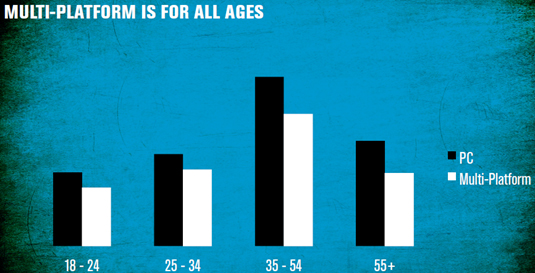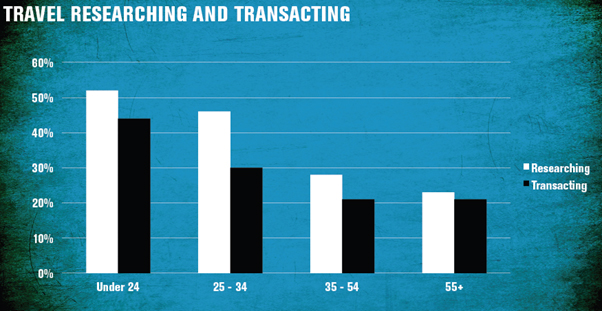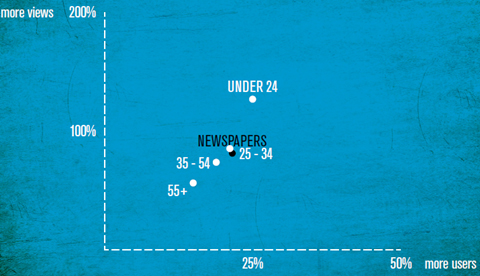For as long as Mad Men have been putting brands on billboards, broadcasting into our living rooms, or catching our attention while we browse content, their craft has always been built around one core question: ‘How do I reach my target audience with the right message on the right platform at the right time?’
The experience of a brand comms planner is that this is at least as much an art as a science, and the artistry of it is something that the digital culture of performance and price struggles to replicate. Brand advertisers are in the business of moving large groups of people just a little further towards action, winning positive intentions through emotionally-persuasive messages, and collusion with the advertising environment and consumer mindset.
Digital on the other hand has made a success and specialism of the last step to purchase. Despite the metrics which abound in digital, one that supports the brand advertiser’s aim is not easy to find.
The solution, as in all media, is to start by understanding as much as possible about the consumer, what they do and why. Providing a trusted and effective system for finding these insights for planning brand communications online is what UKOM exists to do.
UKOM-approved comScore MMX™ Multi-Platform combines PC, mobile and tablet audiences for browsing, apps and video into a truly person-centric digital communications planning tool. UKOM’s role is to govern technically, ensuring the best combination of data and methods, which are reviewed in detail by a dozen of the industry’s top researchers, and commercially to ensure that the price paid by the industry is a fair one.

comScore MMX Multi-Platform shows that in the UK, 69 percent of the online population are multi device users – consuming content not just on their PC, but also on mobile and tablet devices. This adds volume to the existing murmurs that any planner that considers the PC to be the hub of the internet is basing their work on a picture that is only true for 31 percent of the UK population.
This growth has been driven by the surge in smartphone use, which now accounts for 69 percent of the total digital population while tablets contribute 28 percent thanks to a 133 percent uplift in use during the last year alone.
The Multi-Platform Majority
For too long the industry has had to put up with the label that the multi-platform majority is a phenomenon confined to the streets of Soho and Shoreditch. The reality is actually very different. MMX Multi-Platform data demonstrates that it is actually the norm up and down the country, as well as across different generations.
The 55 and over age group actually has a higher percentage of tablet ownership than the market as a whole. As we saw with the launch of the iPhone in 2007, the young and wealthy may well represent the most interested but it is the wealthy that drives uplifts in ownership as spending power is still the critical factor in the adoption of new platforms.
What comes as less of a surprise is the finding that those aged between 25 and 34, alongside the 35 to 44 year olds, account for the largest mobile media user groups even in the wake of strong growth with the older age groups. Despite this the older generation continues to play a more prevalent role. Mobile media users aged 55 and over have increased by just over 20 percent year-on-year and represented almost a fifth of all mobile media users in July 2013.

To discover that multi-platform usage is the industry standard should not surprise anyone but as we begin to breakdown the way these channels are used by the different demographics a more complex and rich picture begins to emerge. For example, for a big ticket industry such as travel, it becomes apparent that younger demographics are considerably more comfortable both researching and purchasing on portable devices compared to their older counterparts.
Once you remove other barriers such as concerns over privacy and security, the best available screen could potentially become the one that is always available, or given the complexity of a task the PC may still be the right one.

Debunking the myths for media owners
Multi-Platform measurement should become the focus of any planner looking to target and communicate the right message to the right audience. For example, with MMX Multi-platform newspapers – or more accurately newsbrands – can gain a better understanding of their audience. The data shows that mobile and tablet actually add an additional audience of 21 percent overall and almost double the number of page views.

While many pinpoint the explosion of mobile and tablet consumption as a dampener for the publishing industry, the reality is very different. These devices present new opportunities for younger users to consume more news content at their convenience.
Many planners may well have assumed that this type of content would cause a skew to an older demographic, when in fact, advertisers need to give serious consideration to where, when and on what device, younger audiences are consuming content.
As ever, it is important to be clear on the intended focus of a campaign and the roles that individual parts of a plan are being tasked. Never before has the industry been able to draw upon more credible and accurate data allowing for advertisers to deliver executions built on true people-based insights.





